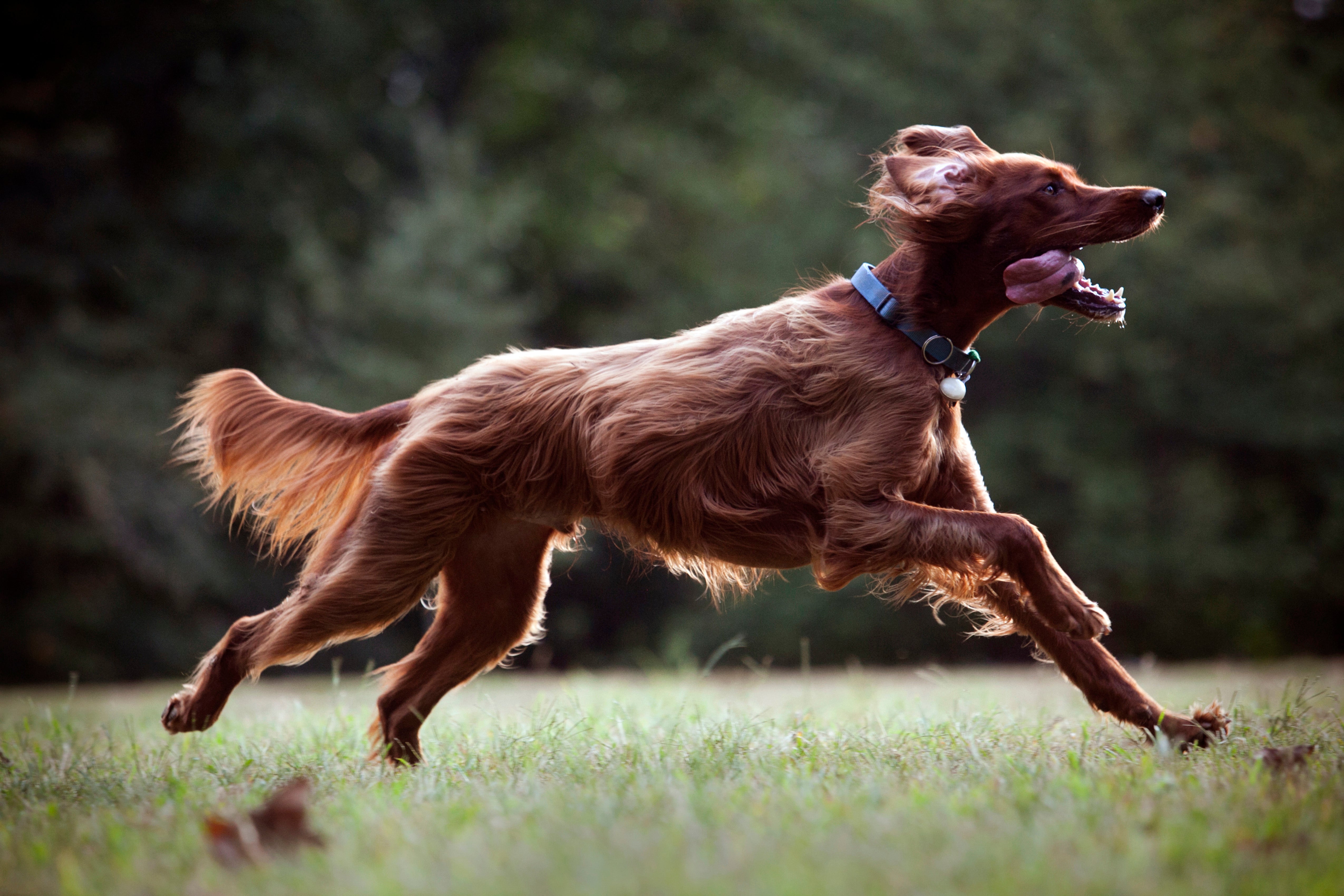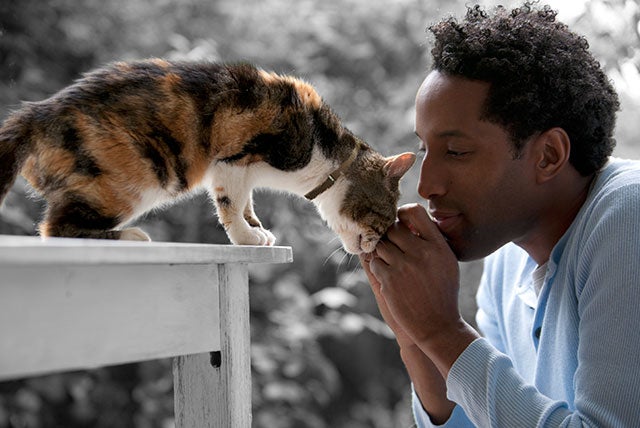Irish Setter
Irish Setters come with a silky, flat coat with feathering at the legs, ears, and tail. Balanced and elegant, the breed strides out with its head held high. Large and muscular, the Irish Setter’s most defining attribute is its rich, chestnut to mahogany feathered coat which would give Farrah Fawcett a run for her money.
Breed characteristics carousel
Learn More
Need to Know
- Dog suitable for owners with some experience
- Extra training required
- Generally healthy breed
- Enjoys vigorous walks
- Large dog
- Some drool
- Requires frequent grooming
- Quiet dog
- Welcomes everyone happily
- Generally friendly with other dogs
- Gets along with other pets with training
- Great family dog
- Needs a large yard
- Can live in suburban or rural areas
- Can be left alone occasionally with training
- AKC Registered Breed

Personality
The Irish Setter approaches everything in life with a good-natured attitude, full of gusto. If given a daily outlet for its energy this breed makes a pleasant companion, but without ample exercise, an Irish Setter can become vocal at home. They are eager to please and be part of family activities.
This distinctive breed is most likely a result of a blend of spaniels, pointers, and other setters. Hunters in Ireland needed a fast-working, keen-nosed dog, large enough to be seen from a distance. They found their dog in the red and white setters produced from these crosses. The first kennels of solid red setters appeared around 1800, and only a few years later these dogs gained a reputation for their rich mahogany color. By the mid-1800s, Irish Red Setters had come to America, proving themselves as effective game bird hunters, although now they’re more inclined to chase squirrels than game. Virtually every modern Irish Setter can be traced to one Irish Setter named Palmerston in the mid-1800s. They enjoyed extreme popularity in the United States in the 1970s.
To bond with an Irish Setter you’ll need a calm and patient hand. The breed is known as the silliest of the Setters, but they’re immensely sensitive and need an owner who can help make them confident.
The Irish Setter was bred to work and will expect their owners to keep up with them. Exercise needs to include free-running and the opportunity to sniff and explore.
Large and used to roaming free, Irish Setters do best with ample space outside.
If there was a contest for the prettiest coat, the Irish Setter would surely be in the running. Daily brushing is essential to keep its feathers looking shiny and clean. Check the paw pads regularly. Their drop ears require a lot of care; very little air circulation gets inside the ear making it a breeding ground for bacteria.
Irish Setters are star students who love working with their owners. Positive, reward-based training can be extremely fruitful, resulting in a very obedient dog. Irish Setters can get easily distracted so recall can be an issue if they get drawn off course by scents, sights, or something to chase, even if it’s only the neighbor’s cat. Scentwork classes can be invaluable to help give them an outlet for their hardwired behaviors.
An active family is a good match for an Irish Setter as they are friendly to everyone and love being outdoors. They may be too bouncy for very small children.
The cost of an Irish Setter from a breeder is significantly more than the cost of adopting one from a local shelter or rescue. The adoption fee usually covers additional items such as spaying or neutering, vaccines, and microchipping.

Learn more about feeding and caring for your Irish Setter on Purina.
Did You Know?
- They can also be called the Red Setter or “Madra rua,” which means red dog in Gaelic.
- The gene that gives an Irish Setter its distinctive red coat is the same one found in Irish and Scottish people with red hair and freckles.
- Two Irish Setters were White House residents: one was named Mike and owned by Harry Truman, and the other was named King Timahoe and owned by Richard Nixon.


